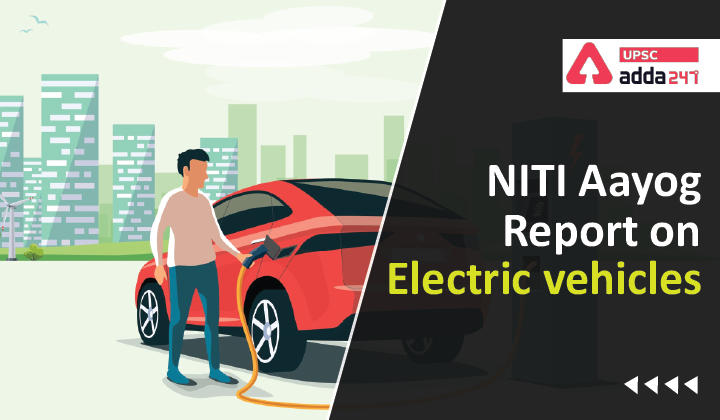Table of Contents
NITI Aayog report on Electric Vehicles: Relevance
- GS 3: Indian Economy and issues relating to planning, mobilization, of resources, growth, development and employment.
NITI Aayog report on Electric Vehicles: Context
- Recently, NITI Aayog, Rocky Mountain Institute (RMI) and RMI India released a new report ‘Banking on Electric Vehicles in India’ which outlines the importance of priority-sector recognition for retail lending in the electric mobility ecosystem.
Key points: Electric vehicles in PSL
- The report provides considerations and recommendations to inform the inclusion of EVs in the Reserve Bank of India’s (RBI’s) priority-sector lending (PSL) guidelines.
- The report says that banks and non-banking financial companies (NBFCs) in India have the potential to achieve an electric vehicle (EV) financing market size of Rs 40,000 crore by 2025 (USD 5 billion) and USD 50 billion by 2030.
- However, buyers are unable to access low-interest rates and long loan tenures for EVs as banks are concerned about resale value and product quality.
- Priority-sector lending can encourage banks to fast-track India’s transition to EVs and help achieve our 2070 climate goals.

Banking on Electric Vehicles in India: Other suggestions
- The report has further indicated that electric two-wheelers, three-wheelers, and commercial four-wheelers are early segments to prioritise under PSL.
- The report has also suggested that RBI may consider various EV segments and use cases based on five parameters: socio-economic potential, livelihood generation potential, scalability, techno-economic viability, and stakeholder acceptability.
- To maximise the impact of the inclusion of EVs, the report also recommends a clear sub-target and penalty mechanism for priority sector lending to renewable energy and EVs.
- Furthermore, it suggests recognition of EVs as an infrastructure sub-sector by the Ministry of Finance and the incorporation of EVs as a separate reporting category under the RBI.
- Multiprong solutions such as these are needed not only for EV penetration and businesses, but also for the financial sector and India’s 2070 net-zero target.
Also Read:



 TSPSC Group 1 Question Paper 2024, Downl...
TSPSC Group 1 Question Paper 2024, Downl...
 TSPSC Group 1 Answer key 2024 Out, Downl...
TSPSC Group 1 Answer key 2024 Out, Downl...
 UPSC Prelims 2024 Question Paper, Downlo...
UPSC Prelims 2024 Question Paper, Downlo...




